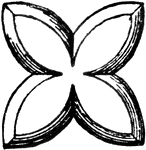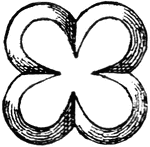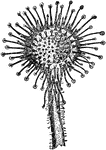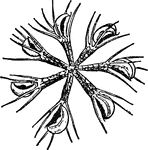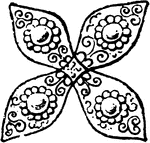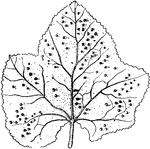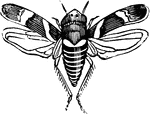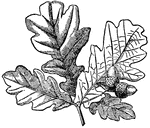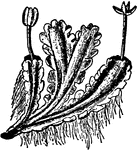
Bud
"Transverse section of a bud, in which the leaves are arranged in an accumbent manner." — Encyclopedia…

Bud
"Transverse section of a bud, in which the leaves are arranged in an equitant manner." — Encyclopedia…

Bud
"Transverse section of a bud, showing two leaves folded in an obvolute manner. Each is conduplicate,…
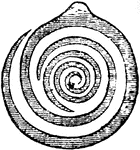
Bud
"Transverse section of a bud, showing two leaves arranged in a supervolute manner." — Encyclopedia…

Purple Foxglove
A biennial herb native to Europe. Its leaves and flowers are poisonous to humans and some animals.

Tortricina
"The Tortricina include a great number of small moths exceedingly injurious to orchard and other trees.…
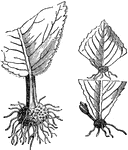
Leaf Cuttings
"Many plans may be propagated by planting their leaves or portions of their leaves as cuttings, as,…
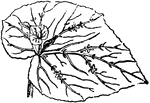
Leaf Cuttings
"Many plans may be propagated by planting their leaves or portions of their leaves as cuttings, as,…

Single Eye
"This mode of propagation is performed by cutting the branches into short lengths, each containing one…
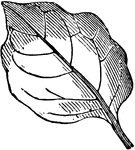
Repand Leaf
Wavy; tending to be sinuate, but less even; undulate; said chiefly of leaves and leaf margins.
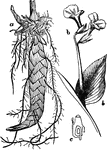
Arrow-root
"Arrow-root (M. arundinacea). a, tubers; b, leaf and flowers; c, stamen and style." — Chambers'…

Convolvulus
"Convolvulus: a, part of stem with leaves and flower; b, a flower-stalk and flower, the corolla and…
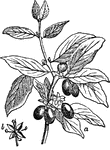
Cornel
"Cornel: a, a branch with leaves and fruit; b, a single flower." — Chambers' Encyclopedia, 1875
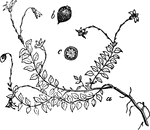
Cranberry
"Cranberry (Vaccinium palustris): a, part of stem and branches, with roots, leaves, and flowers; b,…
Crockets
"In Gothic Architecture, are projecting leaves, flowers, or bunches of foliage, used to decorate the…

Crockets
"In Gothic Architecture, are projecting leaves, flowers, or bunches of foliage, used to decorate the…

Dogbane
"Dogbane. a, end of branch, with leaves and flowers; b, a flower cut open; c, fruit." — Chambers'…

Common Elder
"Flower-stock, Leaves, and cluster of Berries of the Common Elder (Sambucus nigra)." — Chambers'…

Sundew
"Leaf of Sundew, enlarged, with the tentacles on one side infected over a bit of meat placed on the…
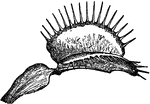
Venus Fly-trap
"Leaf of Venus's Fly-trap (Dionaea muscipula), viewed laterally in its expanded state." — The…

Venus Fly-trap
"Leaf of Venus's Fly-trap (Dionaea muscipula), closed over insect, viewed from the side." — The…
Venus Fly-trap
"Leaf of Venus's Fly-trap (Dionaea muscipula), closed over insect, viewed from above." — The Encyclopedia…

Aldrovanda
"Aldrovanda vesiculosa. Leaf pressed open and enlarged, showing glands, sensitive filaments, and quadrifid…
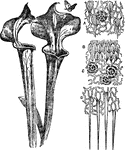
Sarracenta
"Leaves of Sarracenta purpurea. A, attractive surface of lid; B, conducting, C, glandular, and D, detentive…

Cephalotus
"Cephalotus follicularis, showing ordinary leaves and pitchers, the right hand one cut open to show…

Pitchers
"Morphology of Pitchers. A, ordinary leaf of Cephalotus; B, monstrous leaf with spoon-shaped depression;…

Ivory Carving
"Leaf of a diptych, Roman, probably about 4th century, South Kensington Museum collection." —…

Runcinate Leaf
An irregular saw-toothed or pinnately incised with the lobes or teeth hooked backwards.
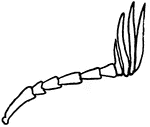
Lamellate Antenna
A lamellate feeler has at its tip a series of elongate, flattened or leaf-like joints, usually…

Butterwort
Glands from surface of leaf by which the sticky liquid is secreted and by means of which the products…

Acanthus
A genus of plants or shrubs, mostly tropical, two species of which arecharacterized by large white flowers…
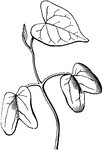
Morning Glory Seedling
Seedling of Morning Glory more advanced (root cut away); cotyledons well developed into foliage-leaves:…

Oil palm
pinnate leaved palm that produces thick clusters of red flowers and fruit that produces high quality…
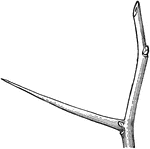
Cockspur Thorn
Spine of Cockspur Thorn developed from an auxiliary bud, as the leaf-scar below witnesses: an accessory…
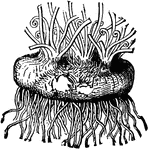
Corm of Cyclamen
Corm of Cyclamen. Roots from lower face, leaf-stalks and flower stalks from the upper.




